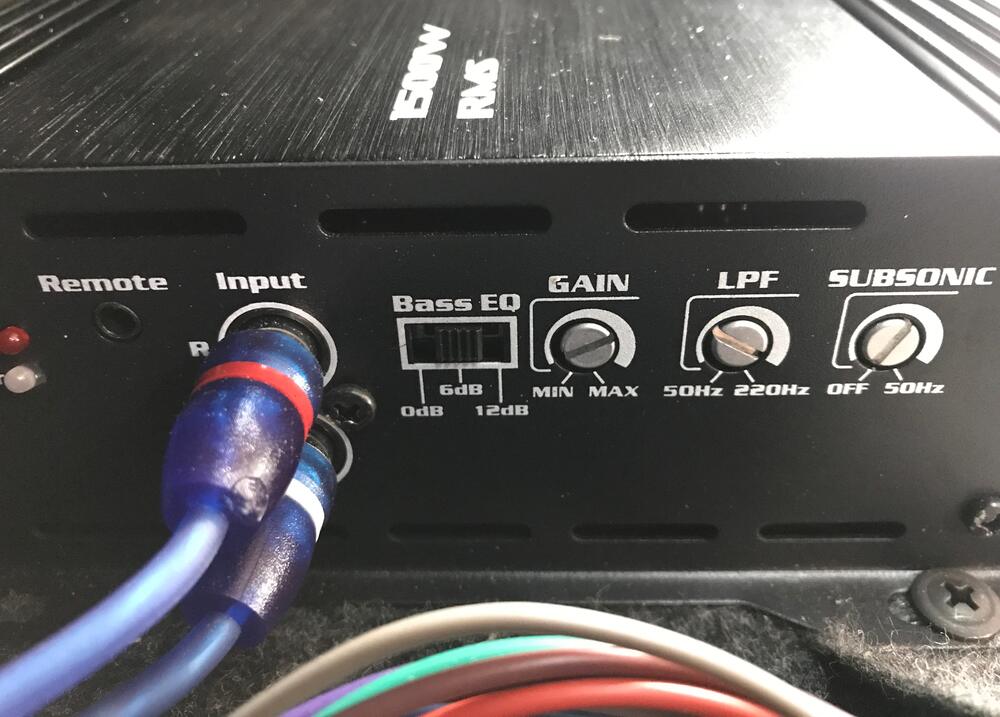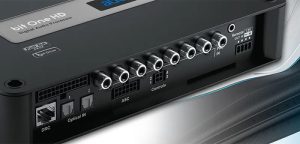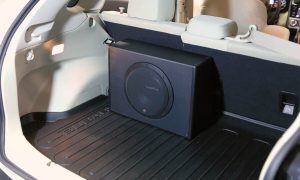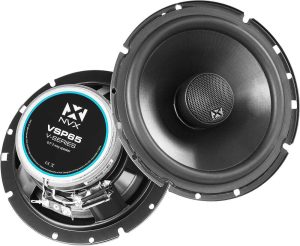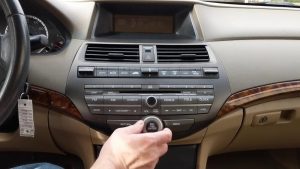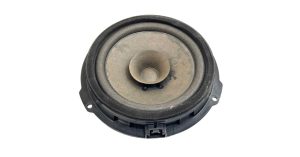Car audio problems can bring your music enjoyment to a sudden halt. If you’ve invested in a Skar amplifier and suddenly notice it’s gone into protect mode, you’re probably wondering what happened and how to fix it. This guide walks you through the common causes and solutions when your Skar amp enters protect mode.
Contents
Understanding Protect Mode on Skar Amplifiers
Protect mode is a safety feature built into quality amplifiers like Skar to prevent damage to both the amp itself and your connected audio equipment. When your amplifier detects potentially harmful conditions, it shuts down and typically displays a red LED light instead of the normal blue or green operating light.
This safety mechanism activates for good reason – it’s saving your expensive equipment from serious damage. But that doesn’t make it any less frustrating when you’re trying to enjoy your music.
Common Reasons Your Skar Amp Goes into Protect Mode
Let’s explore the most frequent culprits that trigger protect mode in Skar amplifiers:
1. Short Circuit Problems
A short circuit occurs when electrical current travels along an unintended path. In car audio systems, this often happens when speaker wires touch each other or when the wire’s insulation breaks down, allowing the copper to contact metal parts of your vehicle.
How to check for short circuits:
- Turn off your audio system completely
- Inspect all speaker wires for exposed copper
- Look for wires touching each other, especially at connection points
- Check for wires contacting metal parts of your vehicle
- Examine the terminals on your speakers and amplifier for loose connections
Short circuits can damage your amplifier permanently if left unchecked, so it’s wise to address this issue first.
2. Improper Impedance Load
Skar amplifiers, like all amps, are designed to work with specific speaker impedance ranges (measured in ohms). When you connect speakers with lower impedance than your amp can handle, it forces the amplifier to work harder, generating excessive heat.
For example, if your Skar amp is rated for 2-ohm minimum impedance and you connect a 1-ohm subwoofer, the amp will likely go into protect mode to prevent overheating and damage.
How to fix impedance issues:
- Check your amplifier’s minimum impedance rating in the manual
- Verify the impedance of your connected speakers/subwoofers
- Reconfigure your speaker wiring to achieve proper impedance
- Consider adding speakers in series rather than parallel to increase overall impedance
3. Overheating Problems
Amplifiers generate significant heat during operation. Skar amps include thermal protection that activates when internal temperatures rise too high.
Several factors can cause overheating:
- Poor ventilation around the amplifier
- Mounting the amp in a hot location (like near the engine)
- Playing music at high volumes for extended periods
- Setting the gain too high
- Low impedance speaker loads
Solutions for overheating:
- Ensure proper ventilation around your amplifier
- Mount the amp in a cooler location if possible
- Allow airflow under and around the amp
- Install cooling fans near your amplifier
- Take listening breaks to let the amp cool down
- Check that your gain settings are appropriate
4. Power Supply Issues
Skar amplifiers need stable power to function properly. Voltage problems are common triggers for protect mode.
Power-related problems include:
Low Voltage: When your vehicle’s electrical system can’t deliver enough voltage to the amplifier, it may shut down protectively. This often happens during bass-heavy passages when the amp demands sudden power surges.
Signs of low voltage problems:
- Headlights dimming when bass hits
- Protect mode engaging during loud passages
- Intermittent operation
Unstable Ground Connection: A poor ground connection creates resistance in your power system, leading to voltage fluctuations and protect mode activation.
Solutions for power issues:
- Ensure your ground wire is secured to clean, bare metal
- Check that power wire gauge is appropriate for your amp’s requirements
- Consider upgrading your vehicle’s alternator for high-power systems
- Install a capacitor to stabilize voltage during bass peaks
- Check for corroded or loose power connections
- Test your vehicle’s charging system (alternator and battery)
5. Internal Amplifier Damage
Sometimes protect mode indicates a fault within the amplifier itself. Common internal problems include:
- Blown output transistors
- Failed capacitors
- Damaged circuit boards
- Water or moisture damage
- Factory defects
If your Skar amp has internal damage, you’ll likely need professional repair or replacement, especially if it’s still under warranty.
Step-by-Step Troubleshooting Process
Follow this systematic approach to identify why your Skar amp is in protect mode:
Step 1: Disconnect All Speaker Wires
First, disconnect all speakers from your amplifier. If the amp comes out of protect mode after removing the speakers, you likely have a short circuit or impedance problem with your speaker wiring.
Step 2: Check Your Power Connections
Verify that your power and ground connections are secure and corrosion-free. Ensure your ground wire connects to clean, bare metal on your vehicle’s chassis. The power wire should connect firmly to your battery’s positive terminal.
Step 3: Test Power and Ground with a Multimeter
Use a multimeter to check:
- Battery voltage (should be 12-14.4 volts)
- Voltage at the amp’s power terminal (should match battery voltage)
- Resistance between ground terminal and chassis (should be very close to 0 ohms)
Step 4: Check for Overheating
If your amp feels extremely hot, overheating might be the culprit. Let it cool down completely before restarting. If it works after cooling, improve ventilation or relocate the amp to prevent future overheating.
Step 5: Inspect Remote Wire Connection
The remote wire tells your amp when to turn on. A faulty remote wire connection can cause erratic operation, including false protect mode activation.
Step 6: Reset Your Amplifier
Some Skar amplifiers have a reset procedure. Disconnect power for at least 30 seconds, then reconnect. This sometimes clears temporary fault conditions.
Step 7: Reconnect Speakers One by One
If the amp stays on without speakers connected, add them back one at a time. When the amp goes into protect mode again, you’ve found the problematic speaker or wire.
Specific Issues with Popular Skar Amp Models
Different Skar amplifier models may exhibit unique protect mode behaviors:
Skar RP Series Amplifiers
The RP series is known for its reliability, but these models are particularly sensitive to:
- Improper gain settings
- Unstable power supply
- Extreme impedance mismatches
Common fix: Reset gain settings following the clipping test in the manual, and ensure proper impedance matching with connected speakers.
Skar SKv2 Series Amplifiers
The SKv2 series offers excellent value but can be prone to:
- Thermal shutdown during extended high-volume play
- Sensitivity to ground loop noise
Common fix: Improve cooling and check for ground loop issues by temporarily trying an alternative ground connection point.
Skar Audio IX Series Amplifiers
The IX series is designed for entry-level systems but may encounter:
- Protect mode during high-volume bass due to power demands
- Sensitivity to low voltage conditions
Common fix: Consider adding a capacitor to stabilize voltage during demanding passages.
Preventing Future Protect Mode Issues
After resolving your current protect mode problem, take these steps to prevent recurrence:
Proper Installation Practices
- Follow manufacturer recommendations for wire gauge
- Use appropriate fuses for protection
- Install the amp in a well-ventilated area
- Secure all connections properly
- Use quality cables and connectors
Regular Maintenance
- Check all connections periodically for corrosion or loosening
- Keep your amplifier clean and free of dust
- Inspect speaker wires for wear or damage
- Test your vehicle’s electrical system annually
Smart Usage Habits
- Allow warm-up time before playing at high volumes
- Take breaks during extended listening sessions
- Avoid extreme volume levels that push your system to its limits
- Be mindful of impedance when upgrading speakers
When to Seek Professional Help
While many protect mode issues can be solved at home, consider professional assistance when:
- You’ve tried all troubleshooting steps without success
- You suspect internal amplifier damage
- Your amp is still under warranty (DIY repairs may void it)
- You’re uncomfortable working with electrical connections
- You lack the tools for proper diagnosis
Professional car audio installers have specialized equipment to pinpoint problems accurately. The cost of diagnosis is often worth avoiding potential damage from incorrect DIY fixes.
Frequently Asked Questions
Q: My Skar amp works fine at low volumes but goes into protect mode when I turn it up. Why?
A: This typically indicates either a power supply limitation or thermal issues that only surface under load. Check that your electrical system can support the amp’s demands and that your gain structure is properly set.
Q: My amp goes into protect mode after playing for about 20 minutes. What’s causing this?
A: Time-dependent protect mode activation usually points to thermal issues. Improve ventilation around your amp or consider adding cooling fans.
Q: Could my head unit be causing my Skar amp to go into protect mode?
A: Yes. If your head unit sends a distorted signal to the amp, it can cause overheating and protect mode activation. Try lowering the head unit volume and adjusting the amp gain properly.
Q: I just installed my Skar amp, and it immediately goes into protect mode. What should I check first?
A: Check for basic wiring errors first: reversed speaker wires, power/ground issues, or short circuits. These are the most common problems with new installations.
Conclusion
Protect mode in your Skar amplifier, while frustrating, is ultimately a feature designed to save your equipment from damage. By methodically working through the possible causes – from short circuits to impedance problems, overheating to power supply issues – you can typically identify and fix the problem.
Remember that proper installation practices, regular maintenance, and smart usage habits go a long way toward preventing future protect mode activations. If you’ve exhausted your troubleshooting options, don’t hesitate to consult a professional car audio installer who can help diagnose and resolve more complex issues.
With the right approach, you’ll have your Skar amplifier back to delivering the powerful, clean sound that made you choose it in the first place.
